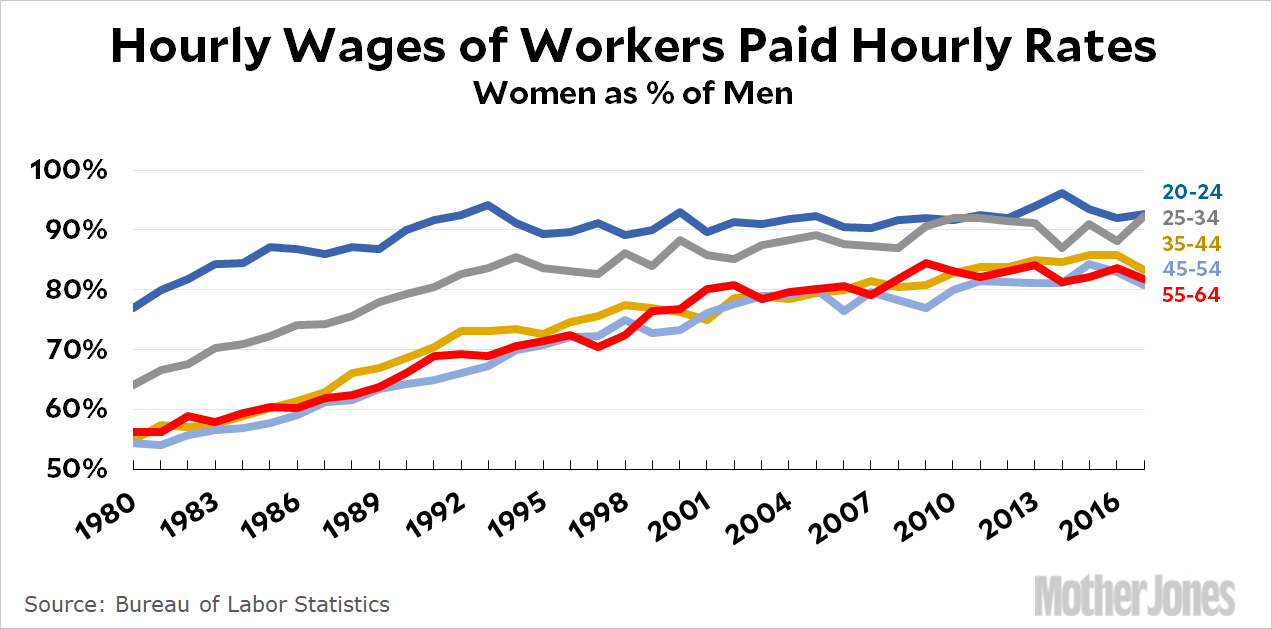I just wasted about two hours screwing up some data and then screwing it up again, but then, almost by accident, I got this. It’s not what I was looking for, but after two hours, by God, I’m going to show it to you anyway:

These are hourly wages for workers who are paid by the hour. This accounts for about half of all workers (80 million out of 160 million) and it’s pretty solidly working-class. What it shows is two things:
- Working-class women have made considerable gains on an hourly basis over the past four decades.
- Younger women have always been closer to earning as much as men, and today earn 92 percent as much. The three older cohorts are at 80-83 percent.
The older cohorts, of course, are more likely to be women with children. I don’t know precisely what the mechanism is, but this seems likely to account for the difference.


















